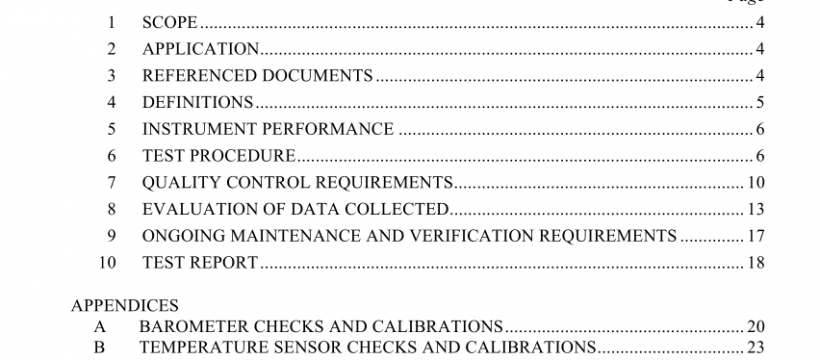AS NZS 3580.9.17:2018 pdf free download
AS NZS 3580.9.17:2018 pdf free download.Methods for sampling and analysis of ambient air
The transfer standard barometer shall undergo an initial calibration against the response of the reference barometer over the range typically encountered at a monitoring site, including at least five points over this range to establish the calibration curve. For both options the calibration shall be traceable to the international system of units (SI).
All calibrations shall be evidenced by a calibration certificate which states the sensitivity of the instrument by a procedure which establishes traceability to a recognized standard and for which an uncertainty is given at a stated level of confidence.
The reference and transfer standard barometer calibration shall be repeated if the instrument has undergone any major service or if the barometer fails the working point check described below.
The procedure for calibrating the transfer standard barometer against the response of the reference barometer shall be as follows:
(a) Pneumatically connect the transfer standard and reference barometers in parallel with a syringe of sufficient capacity to simulate the required range of atmospheric pressures. The syringe shall be constructed such that the piston can be locked into position for each test point.
(b) Draw a vacuum down to the lowest test point and wait one minute for the readings to stabilize. Record the pressure readings for both instruments. Wait a further minute to ensure that the system is leak proof. The change in reading during this period shall be less than 1 hPa. Record the final readings of both instruments.
(c) Adjust the syringe to the next test point, ensuring that the pressure is only increased (to avoid hysteresis errors). Wait one minute for the readings to stabilize and record the final readings for both instruments.
(d) Repeat Step (c) for the remaining points and record the results. The difference between the transfer standard and reference barometer pressures shall be less than ±3 hPa at each test point. The range (maximum minus minimum) of the differences shall also be less than 3 hPa.
AS NZS 3580.9.17:2018 pdf free download
